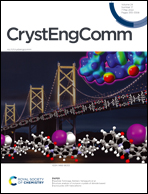A scalable, low-cost and green strategy for the synthesis of ultralong hydroxyapatite nanowires using peanut oil†
Abstract
As a highly biocompatible material, hydroxyapatite (HAP) has been used extensively in various fields. Ultralong HAP nanowires with ultrahigh aspect ratios possess prominent merits such as good flexibility, high biocompatibility, excellent mechanical properties, high thermal stability, and excellent fire resistance. Consequently, ultralong HAP nanowires are promising for applications in various fields. However, the large-scale, low-cost and environmentally friendly synthesis of ultralong HAP nanowires remains a great challenge. In this work, we have developed a scalable, low-cost and green method for the synthesis of ultralong HAP nanowires using peanut oil as one of the main reaction reagents. The effects of experimental parameters on the morphology of ultralong HAP nanowires are studied, including the amounts of peanut oil, sodium hydroxide and methanol, and the molar ratio of Ca/P. The synthetic formulation for preparing ultralong HAP nanowires has been optimized by varying the experimental conditions. Importantly, compared with a previously reported calcium oleate precursor solvothermal method using oleic acid, the synthetic method using peanut oil reported herein can significantly reduce the production cost for the synthesis of ultralong HAP nanowires. It is encouraging that peanut oil is an eco-friendly, inexpensive, and sustainable food; thus, the production cost for ultralong HAP nanowires can be significantly reduced. Moreover, the synthetic strategy reported herein can be scaled up for large-scale, green and low-cost production of ultralong HAP nanowires. This novel synthetic method is promising for future industry-scale production of ultralong HAP nanowires. Furthermore, based on ultralong HAP nanowires, fire-resistant inorganic paper has been prepared by a simple vacuum-assisted filtration method. The ultralong HAP nanowire-based fire-resistant inorganic paper exhibits advantages such as high flexibility, high whiteness without bleaching, nonflammability, and excellent high-temperature resistance, which are promising for applications in various fields.



 Please wait while we load your content...
Please wait while we load your content...